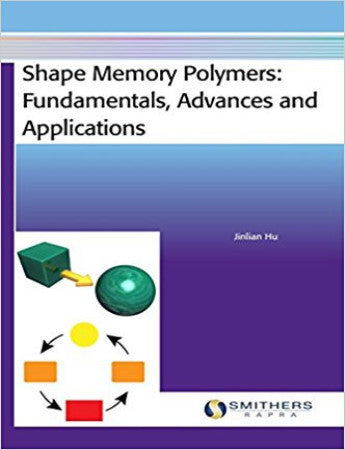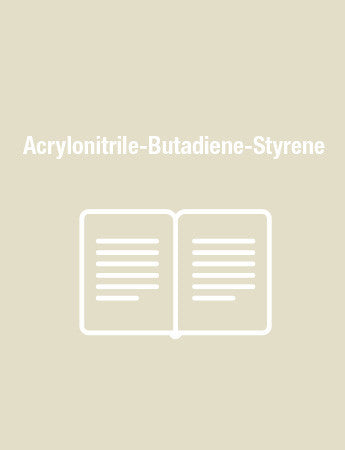This book provides the latest advanced information on on-going research domains of SMP. This will certainly enlighten the reader to the achievements and tremendous potentials of SMP.
The basic fundamentals of SMP, including shape-memory mechanisms and mechanics, are described. This will aid the reader to become more familiar with SMP and the basic concepts, thus guiding them in undergoing independent research in the SMP field.
The book also provides the reader with associated challenges and existing application problems of SMP. This could assist the reader to focus more on these issues and further exploit their knowledge to look for innovative solutions. Future outlooks of SMP research are discussed as well.
This book should prove to be extremely useful for academics, R&D managers, researcher scientists, engineers, and all others related to the SMP research.
1 Shape-memory Polymers
1.1 Introduction
1.2 Shape-memory Effect
1.2.1 Shape-memory Effect in Shape-memory Polymers
1.2.2 Shape-memory Effect in Shape-memory Polymers and Shape-memory Alloys
1.3 Structure of Shape-memory Polymers
1.3.1 Thermally Induced Shape-memory Polymers
1.3.2 Athermal Shape-memory Polymers
1.4 Classification of Shape-memory Polymers
1.5 Conclusions
2 Shape-memory Polymers: Molecular Design, Shape-memory Functionality, and Programming
2.1 Introduction
2.2 Molecular Design of Shape-memory Polymers
2.2.1 Thermally Sensitive Shape-memory Polymers
2.2.1.1 Shape-memory Polymers based on the
Amorphous Phase
2.2.1.2 Shape-memory Polymers based on Semi-crystalline Phase
2.2.1.3 Shape-memory Polymers based on Liquid Crystalline Phase
2.2.2. Photosensitive Shape-memory Polymers
2.2.3. Other Molecular Architectures of Shape-memory Polymers
2.3 Shape-memory Programming
2.3.1 Processing One-way Shape-memory Effects
2.3.1.1 Dual-shape Creation Process for One-way Dual-shape Shape-memory Effects
2.3.1.2 Programming for One-way Triple-shape Shape-memory Effects
2.3.2 Processing One-way Shape-memory Effects
2.3.2.1 Programming for Two-way Dual-shape Shape-memory Effects
2.3.2.2 Programming for Two-way Triple-shape Shape-memory Effects
2.3.3 Multiple Shape-memory Effects Programming
2.4 Shape-memory Functionality
2.4.1 One-way Shape-memory Effects
2.4.2 Two-way Shape-memory Effects
2.4.2.1 Liquid Crystalline Elastomers
2.4.2.2 Shape-memory Polymers having a
Semi-crystalline Phase under Constant Stress
2.4.3 One-way Shape-memory Effects
2.4 Shape-memory Functionality
2.4.2.3 Shape-memory Polymer Laminated Composites
2.4.3 Triple/Multiple Shape-memory Effects
2.4.4 Temperature-memory Effects
2.5 Conclusions
3 Shape-memory Polymer Composites
3.1 Introduction
3.2 Nanowhisker/Shape-memory Polymer Composites
3.2.1 Cellulose Nanowhiskers
3.2.2 Integration of Cellulose Nanowhiskers
3.3 Carbon/Shape-memory Polymer Composites
3.3.1 Carbon Nanotube and Carbon Nanofibre/Shape-memory Polymer Composites
3.3.2 Carbon Black/Shape-memory Polymer Composites
3.3.3 Electrically Sensitive Shape-memory Polymer Nanocomposites
3.3.4 Light-sensitive Shape-memory Polymer Nanocomposites
3.3.5 Enhanced General Shape-memory Effect
3.4 Fibre/Fabric-reinforced Shape-memory Polymer Composites
3.4.1 Microfibre or Fabric/Shape-memory Polymer Composites
3.4.2 Electrospun Nanofibre Shape-memory Polymer Nanocomposites
3.5 Metal and Metal Oxides/Shape-memory Polymer Composites
3.6 Other Shape-memory Polymer Composites
3.6.1 Nanoclay/Shape-memory Polymer Composites
3.6.2 Other Inorganic Filler/Shape-memory Polymer Composites
3.6.3 Organic Filler/Shape-memory Polymer Composites
3.6.4 Shape-memory Polymer Composites with Special Function
3.7 Conclusions
4 Shape-memory Polymer Blends
4.1 Introduction
4.2 Miscible Polymer Blends
4.2.1 Shape-memory Polymer/Polymer Blends
4.2.2 Amorphous Polymer/Crystalline Polymer Blends
4.3 Immiscible Polymer Blends
4.3.1 Elastomer/Polymer Blends
4.3.2 Other Types of Immiscible Blends
4.4 Blending and Post-crosslinking Polymers Networks
4.4.1 Interpenetrating Polymer Networks
4.4.2 Crosslinked Polymer Blends.
4.5 Conclusions
5 Shape-memory Polymers Sensitive to Different Stimuli
5.1 Introduction
5.2 Thermally sensitive Shape-memory Polymers
5.2.1 Shape-memory Effect based on Conventional Glass or Melting Transition
5.2.2 Shape-memory Effect by Indirect Heating
5.2.3 Shape-memory Effect based on a Thermally Reversible Reaction
5.2.4 Shape-memory Effect based on Supermolecular Structure
5.2.5 Two-way Shape-memory Effect based on Change in the Conformation of Anisotropic Chains
5.2.6 Two-way Shape-memory Effect based on Cooling-induced Crystallisation Elongation
5.2.7 Two-way Shape-memory Effect based on Shape-memory Polymer/Carbon Nanotube Composites
5.2.8 Multiple Shape-memory Effect based on Combined Switches
5.2.9 Thermally active and pH-active Polymeric Hydrogels
5.3 Light-sensitive Shape-memory Polymers
5.3.1 Photodeformability Induced by Photoisomerisation
5.3.2 Photodeformability induced by Photoreactive Molecules
5.3.3 Photoactive Effect from the Addition–fragmentation Chain Transfer Reaction
5.3.4 Light-active Polymeric Hydrogels
5.4 Magnetic-sensitive Shape-memory Polymers
5.4.1 Shape-memory Polymer Matrices filled with Magnetic Particles
5.4.2 Magnetic-active polymeric gels
5.5 Water/solvent-sensitive Shape-memory Polymers
5.6 Electric-sensitive Shape-memory Polymers
5.7 Conclusions
6 Modelling of Shape-memory Polymers
6.1 Introduction
6.2 Macroscale Constitutive Modelling
6.2.1 Stress–strain Characteristics
6.2.2 Shape-memory Properties
6.3 Mesoscale Modelling
6.4 Microscale Modelling
6.5 Molecular Dynamics and Monte Carlo Simulations
6.5.1 Reaction Characteristics
6.5.2 Physical Properties
6.5.3 Microstructure
6.5.4 Hydrogen bonding Interactions
6.5.5 Mechanical Properties
6.6 Mathematical Modelling
6.7 Modelling of Device Structures
6.8 Modelling of Light-sensitive Shape-memory Polymers
6.8.1 Three-dimensional Finite Deformation Modelling
6.8.2 Multiple Natural Configurations Modelling
6.8.3 Multi-scale Modelling
6.9 Conclusions
7 Supramolecular Shape-memory Polymers
7.1 Introduction
7.2 Supramolecular Chemistry
7.2.1 Hydrogen Bonding
7.2.2 Relationship between Shape-memory Polymers and Supramolecular Polymer Networks
7.3 Polymers Containing Pyridine Moieties: a Pathway to Achieve Supramolecular Networks
7.3.1 Function of Pyridine Moieties in Supramolecular Chemistry
7.3.2 Supramolecular Pyridine-containing Polymers
7.3.3 Supramolecular Liquid Crystalline Polymer-containing Pyridine Moieties
7.4 Supramolecular Shape-memory Polymers based on Pyridine Moieties
7.4.1 Synthesis
7.4.2 Structure and Morphology
7.4.3 Thermally induced Shape-memory Effect
7.4.4 Moisture-sensitive Shape-memory Effect
7.5 Supramolecular Shape-memory Polymers based on Cyclodextrins
7.5.1 Cyclodextrins
7.5.2 Thermally induced Shape-memory Effect
7.5.3 Non-thermally Induced Shape-memory Effects
7.6 Potential Applications
7.6.1 Reshape Applications
7.6.2 Shape-memory Effect for Hairstyles in Beauty Care
7.6.3 Two-way Shape-memory Polymer Laminates
7.6.4 Medical Application: Antibacterial
7.6.5 Intelligent Windows for Smart Textile Applications
7.7 Conclusions
8 Applications of Shape-memory Polymers
8.1 Introduction
8.2 Applications of Bulk Shape-memory Polymers
8.2.1
8.2.2
Fixation
8.2.1.1 Orthodontic Wires
8.2.1.2 Medical Casts
Actuation
8.2.2.1 Actuation Realised by Combining Shape-memory Polymers with Specific Structures
8.2.2.2 Actuation arising from a Two-way Shape-memory Effect Deployment
8.2.3.1 Cold Hibernated Elastic Memory of Shape- memory Polymer Foams
8.2.3.2 Expandable Stents
8.2.3.3 Deployable Dialysis Needles, Coils, and Neuronal Electrodes
8.2.3
8.2.4
8.3.3 Adaptable Biological Devices for Modulating Cellular– substrate Interactions
8.3.4 Biosensor and Micro-systems
8.3.5 Programmable Surface Pattern
8.3.6 No-programming Reversible Shape-memory Surface Patterns
8.4 Applications in Textiles
8.4.1 Shape-memory Polymer Fibres
8.4.2 Shape-memory Polymer Yarns and Fabrics
8.4.3 Shape-memory Polymer Solutions for Finishing Fabrics
8.4.4 Shape-memory Polymer Nanofibres and their Nonwovens
8.4.5 Shape-memory Polymer Film/Foam and Laminated Textiles
8.5 Engineering Applications
8.5.1 Transportation
8.5.2 Sensors and Actuators
8.5.3 Filtration
Self-healing
8.2.4.1 Confined Shape-recovery Self-healing
8.2.5 Fitting
8.3 Applications in Surface Wrinkling and Patterning
8.3.1 Principe of Surface Wrinkling
8.3.2 Wetting and Spreading
9 Future
Outlook
9.1 Introduction
9.2 New Shape-memory Polymers with Novel Structures and Diversified Functionalities
9.2.1 New Stimulus Switches
9.2.2 Intrinsic Athermal Switches
9.2.3 Multi-responsive and Multi-functional Switches
9.3 Development Trends of Shape-memory Polymer Composites and Blends
9.3.1 Electric-Sensitive Shape-memory Effect
9.3.2 Light-Sensitive Shape-memory Effect
9.3.3 Magnetic-Sensitive Shape-memory Effect
9.3.4 Water/Solvent-Sensitive Shape-memory Effect
9.3.5 Shape-memory Effect based on Non-thermal Phase Transitions
9.4 Versatile Shape-memory Effects by Novel Programming Protocols
9.4.1 Programmability
9.4.2 Imperfection or a New Shape-memory Effect
9.5 Fundamental Understanding
9.6 Comprehensive Study of Structure-property Relationships
9.7 Modelling
9.8 Application in Textiles
9.9 Biomedical Applications
9.10 Applications toward Commercial Success
9.10.1 Maturing and Broadening of Applications.
9.10.1.1 Existing Widely Researched Areas
9.10.1.2 Broadening Areas
9.10.1.3 Untouched Areas
9.10.2 Integrated Approaches
9.10.3 Challenging Issues in Applications
9.11 Supramolecular Shape-memory Polymers
9.12 Conclusions
Abbreviations
Index




